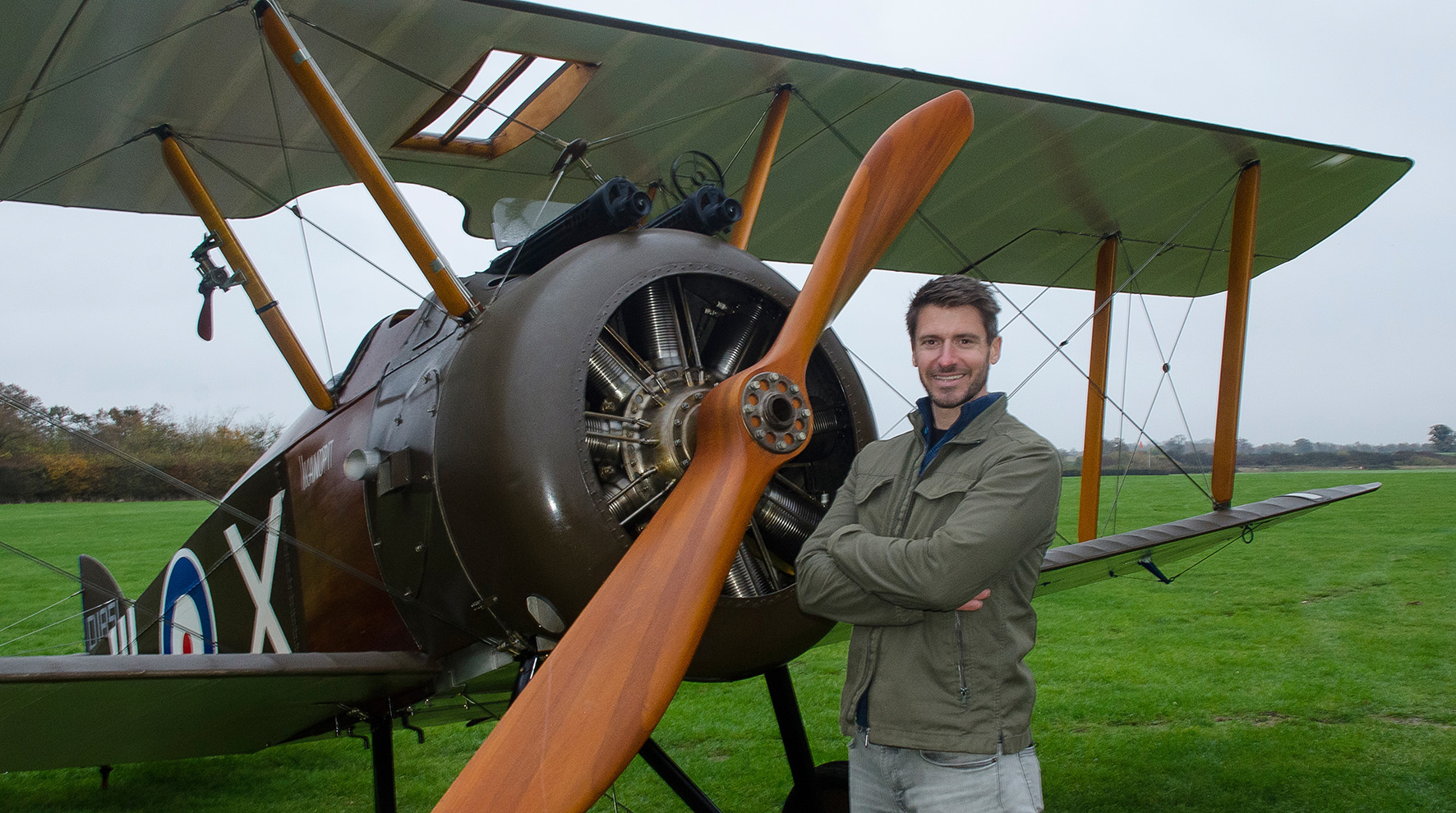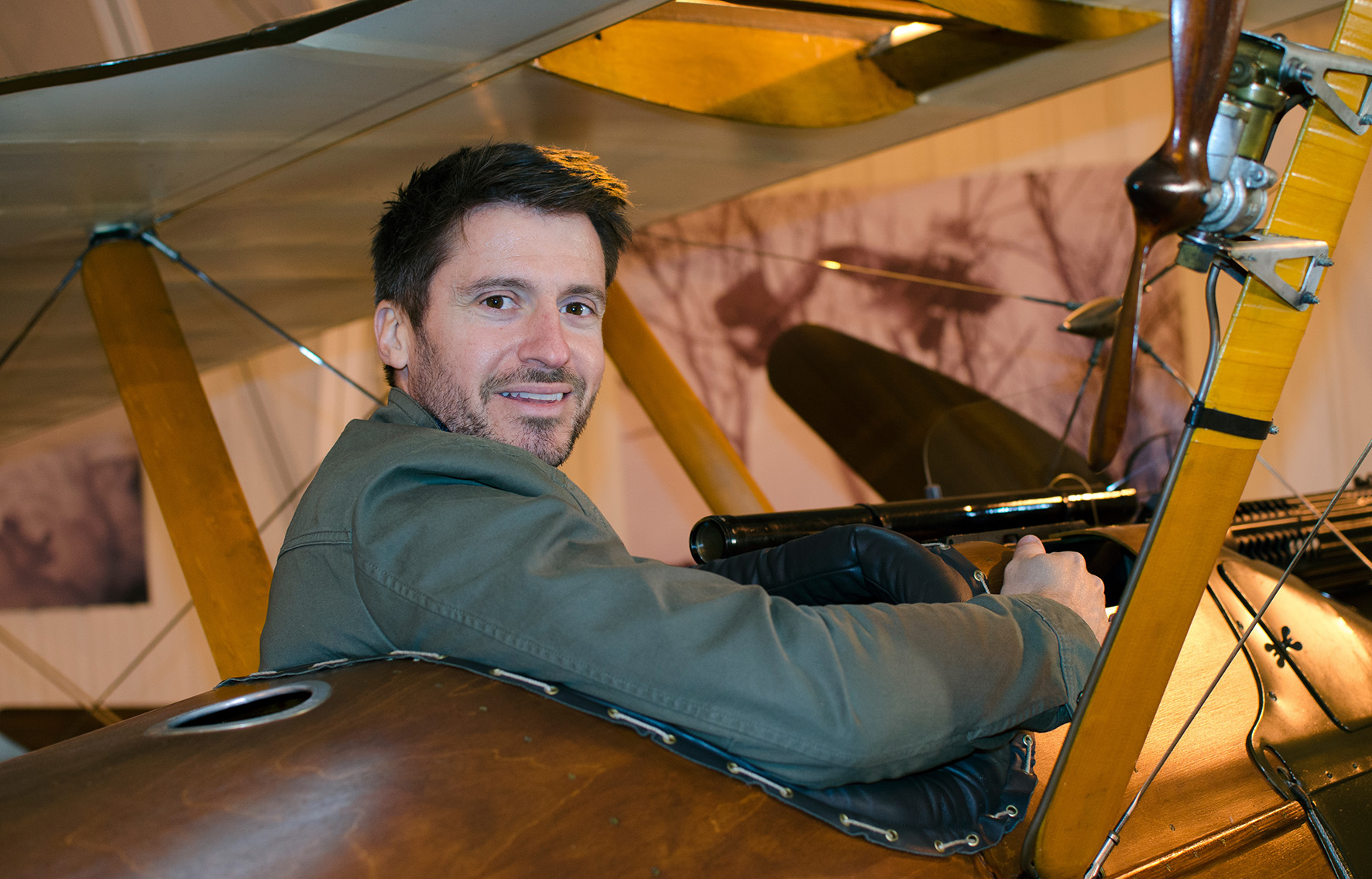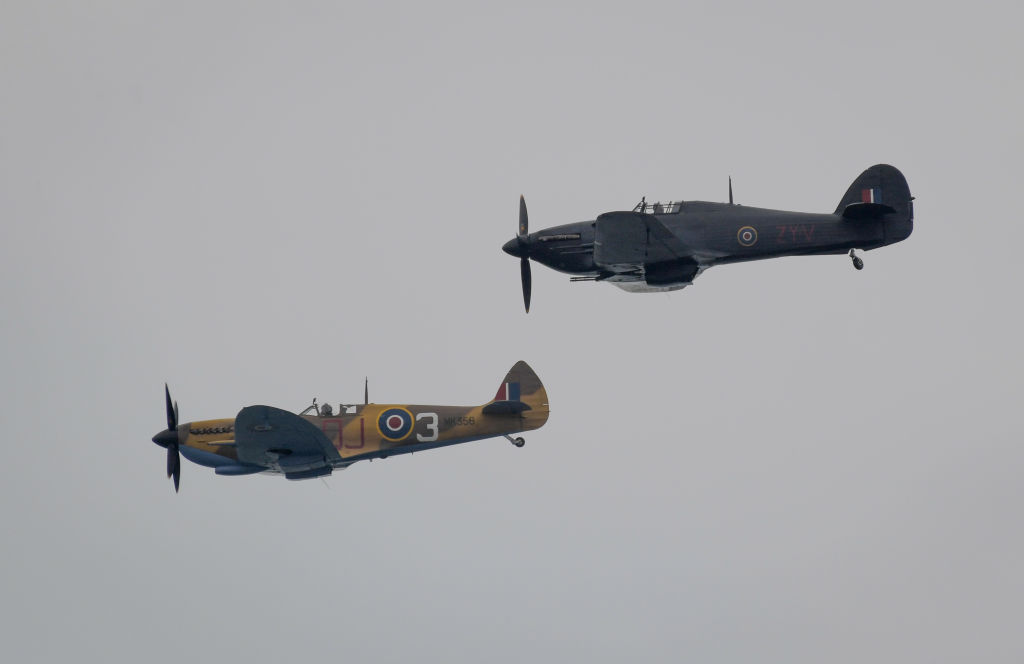British Planes That Won The War with Rob Bell — air date, what happens, episode guide and all about the new series
British Planes That Won The War with Rob Bell on Channel 5 takes a look at history in the sky.

British Planes That Won The War with Rob Bell is a new four-part series on Channel 5 that goes back in time to show how Britain has designed and built some of the world’s most iconic aircraft. Presenter Rob Bell reveals the history of some of them, beginning with World War One fighter plane, the Sopwith Camel. The Sopwith Camel was difficult to handle, but despite the drawbacks, the plane shot down 1294 enemy aircraft, contributing to the Allies winning the war.
So here's everything you need to know about British Planes That Won The War with Rob Bell on Channel 5...
British Planes That Won The War with Rob Bell release date
British Planes That Won The War with Rob Bell begins on Channel 5 on Friday 10 June at 9pm and runs weekly. Each of the four episodes will then become available on streaming service My5 after their Channel debut.
Rob Bell on what happens in British Planes That Won The War
As British Planes That Won The War with Rob Bell will show, since earliest days of flight Brits have designed and built some of the world’s most iconic aircraft, from Lancasters to Spitfires. This new four-part series, presented by Rob Bell, reveals the history of some of those British-built planes and how they revolutionised aerial combat, starting with the story of World War One's most deadly fighter plane, the Sopwith Camel.
During the World War One, the Allies and the Germans were battling for superiority in the air, and Herbert Smith, chief engineer at the Sopwith Aviation Company, was challenged to come up with a plane that was fast, agile and could take the fight to the enemy. His so-called Sopwith Camel entered battle in the summer of 1917 and made an immediate impact.
"Its biggest innovation was its lethal weaponry,’ explains Rob. "It was armed with two forward-facing machine guns, which gave the pilots a huge advantage in a dogfight. The Camel soon dominated the skies over Europe and gained a fearsome reputation."
Although it was lightweight and nimble, the Camel’s greatest strength also proved to be its fatal flaw. Its powerful rotary engine severely affected the aircraft’s handling and proved deadly to novice pilots. Meanwhile, the fact that it was made completely out of wood meant that it was highly flammable, making it a death trap when under fire. But the Camel still ended up being credited with downing 1294 enemy aircraft, making it more successful than any other Allied fighter.
The latest updates, reviews and unmissable series to watch and more!
"The Camel had a huge impact on World War I and was a massive contributory factor towards the Allies winning the war," says historian Professor Kate Williams. "Without the Camel, Germany would have completely dominated the skies. So if ever a plane could be said to change the course of history I think the Camel has a really big claim. Without it, would we have won World War I? I’m not sure."

British Planes That Won The War with Rob Bell episode guide
Here's our episode guide to British Planes That Won The War with Rob Bell which we will update regularly as we hear more on each episode...
Episode 1
Rob Bell introduces us to the Sopwith Camel and reveals the historic significance of this legendary war plane (see lots more above). This episode also explores the rapid evolution of aircraft in warfare as air superiority became an essential requirement for victory in battle. It takes to the skies to demonstrate how difficult these early fighter planes were to control for the young and inexperienced pilots of the newly formed Royal Air Force. It also relives the crucial battles of World War One in which the Sopwith Camel played such a vital role, and we look at how the plane took on German flying aces such as the infamous Red Baron. You will also get to meet the modern-day enthusiasts and restorers who continue to keep this iconic aircraft in the skies, and we learn the techniques and skills behind the plane’s construction.
Episode 2
In the second episode, Rob Bell reveals why the Spitfire became the most famous fighter aircraft that Britain has ever produced. The iconic war plane was an engineering triumph created by Southampton-based aircraft manufacturer Supermarine. It led the fight against the Luftwaffe during the Battle of Britain and sits alongside other WWII greats such as the Hurricane and the Lancaster bomber. Rob explores what made the Spitfire such a formidable fighter: its unique design and powerful Merlin engine gave it superior handling in the close-quarter dogfights that took place across the skies in the crucial period of 1940 that became known as the Battle of Britain. We meet veteran pilots and hear what it was like to fly the Spitfire, often after just a very brief period of training. We also learn about the civilian war effort that went into the production of this aircraft and how restorers today continue to keep its memory alive. The legacy of the Spitfire is celebrated and how it has influenced modern warfare today, with super advanced jets such as the Eurofighter may have become the modern descendant of the Spitfire, but its pilots are still required to train for the same dogfight experiences as their WWII predecessors.

Episode 3
During the winter of 1940 the future of Britain hung in the balance, with 40,000 lives lost as its citizens faced the nightly onslaught of The Blitz. Our own fighter planes were too small and didn’t have the power to fly 600 miles to hit back at Germany, so things were looking bleak. Then up stepped genius Roy Chadwick, who designed the magnificent Lancaster bomber, with four powerful engines, three gun turrets and a 33ft bay for carrying twice as many bombs as usual.
"It was the most fearsome weapon of war the British ever unleashed," says Rob Bell, who presents this series. "The British bombers started to strike back at the Nazis, avenging the horrors of the Blitz. Cities like Hamburg, Cologne and Berlin were pounded night after night with incredible accuracy."
The iconic planes were also used in one of the most famous wartime missions in British history - the Dambusters raid. They were flown at just 60ft and dropped ‘bouncing bombs’ which destroyed three of Germany’s dams in the Ruhr Valley. Lancasters were also used to divert attention away from the beaches of Normandy during the D-Day invasions. "They were Britain’s most potent weapon,’ says Rob. ‘Without the bomber boys and the Lancaster, British history would have followed a very different path."
Episode 4
Developed during the Cold War, the Harrier Jump Jet was the first aircraft that could make a vertical take-off and landing, meaning it wouldn’t need a runway. This revolutionised combat, as runways are vulnerable to enemy bombing raids, and contributed to the Cold War deterrent. Here Rob Bell meets those who flew the jet and learns about its important and influential role in military history.
* Best Channel 5 documentaries on My 5
* Best BBC documentaries
* Best Channel 4 documentaries
* Fishing Scotland’s Lochs and Rivers
* Watercolour Challenge

I'm a huge fan of TV so I've found the perfect job, writing about telly shows and interviewing major television, film and sports stars for over 30 years. I'm currently the TV Content Director on What's On TV, TV Times, TV and Satellite Week magazines plus contribute to Whattowatch.com. I previously worked on Woman and Woman's Own in the 1990s. Outside of work I swim every morning, support Charlton Athletic football club and get nostalgic about TV shows Cagney & Lacey, I Claudius, Dallas, Tenko and I'm quite partial to a bit of Little House on The Prairie. I'm totally on top of everything good coming up too, and love newer shows such as The Day Of The Jackal, This is Us, Hacks and anything Dexter.

